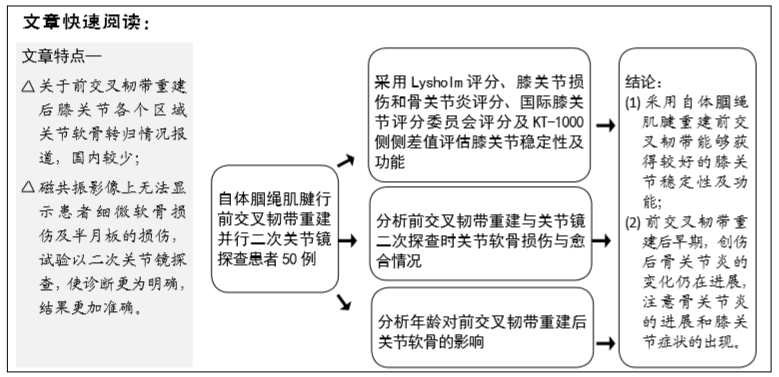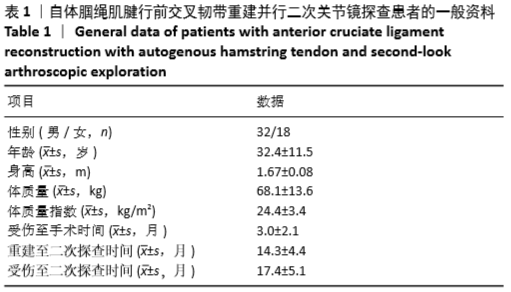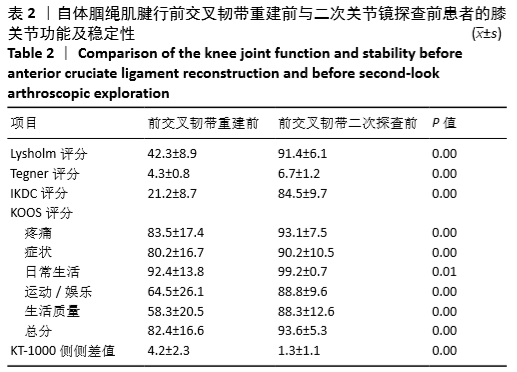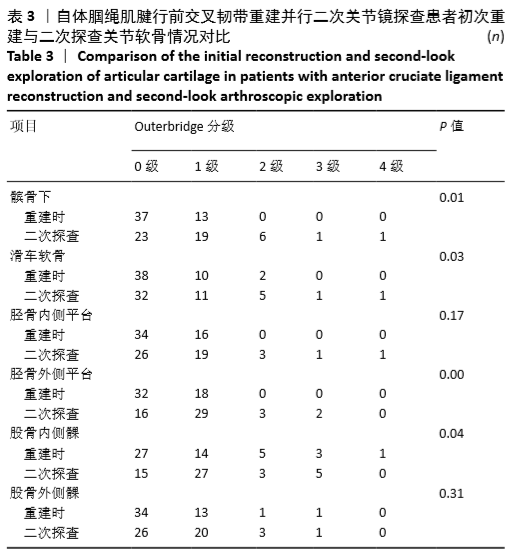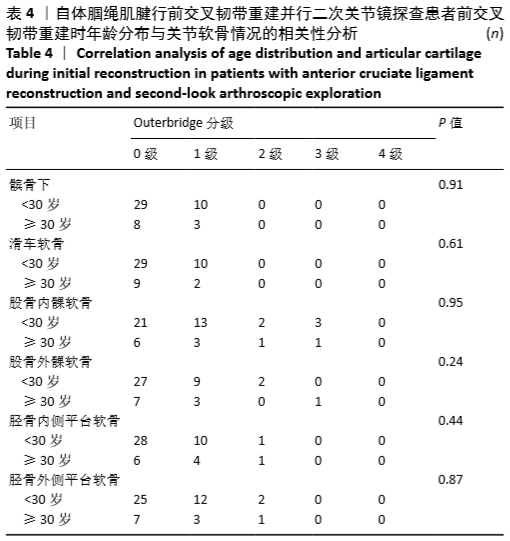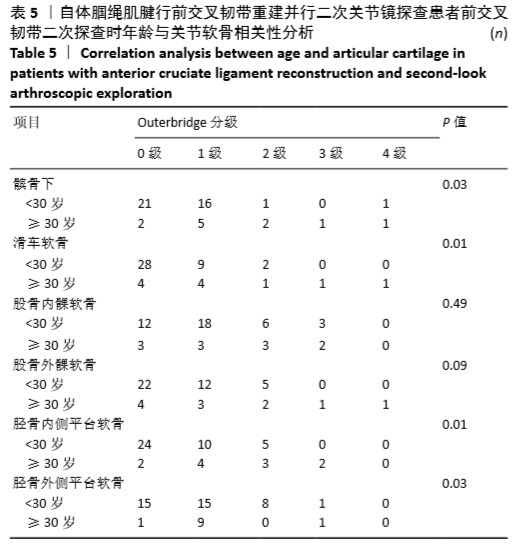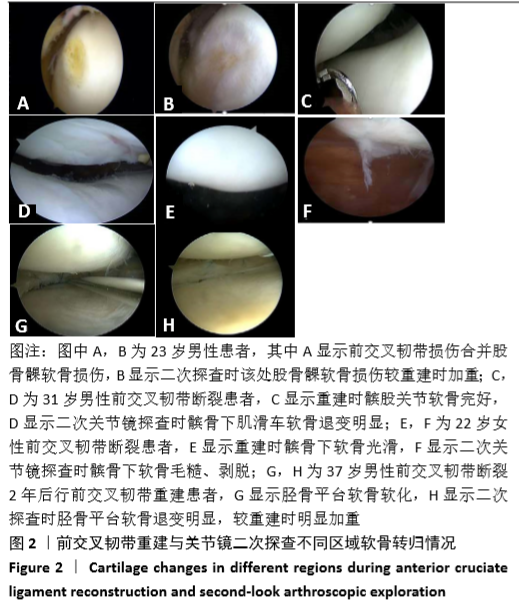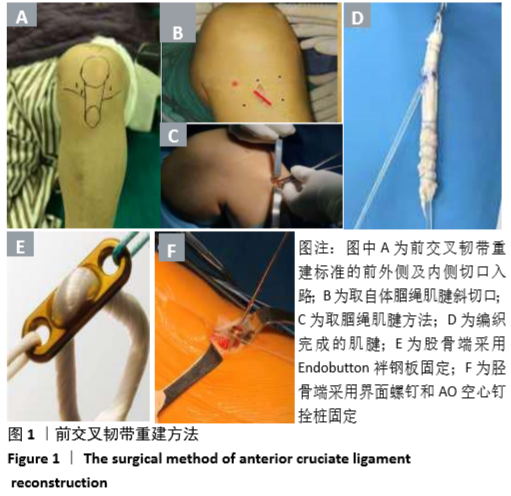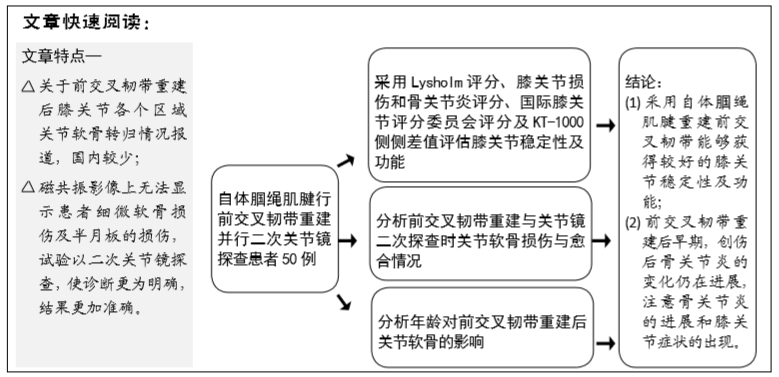[1] 王成,龚喜,胡晓青,等.前交叉韧带断裂病程时长对半月板损伤及其手术缝合影响的临床研究[J].中国运动医学杂志,2016, 35(12):1089-1093.
[2] SIMON D, MASCARENHAS R, SALTZMAN BM, et al. The Relationship between Anterior Cruciate Ligament Injury and Osteoarthritis of the Knee. Adv Orthop. 2015;2015:928301.
[3] MAFFULLI N, BINFIELD PM, KING JB. Articular cartilage lesions in the symptomatic anterior cruciate ligament-deficient knee. Arthroscopy. 2003;19(7):685-690.
[4] MUNETA T. Twenty-Year Experience of a Double-Bundle Anterior Cruciate Ligament Reconstruction. Clin Orthop Surg. 2015;7(2): 143-151.
[5] LOHMANDER LS, ENGLUND PM, DAHL LL, et al. The long-term consequence of anterior cruciate ligament and meniscus injuries: osteoarthritis. Am J Sports Med. 2007;35(10):1756-1769.
[6] CULVENOR AG, COLLINS NJ, GUERMAZI A, et al. Early knee osteoarthritis is evident one year following anterior cruciate ligament reconstruction: a magnetic resonance imaging evaluation. Arthritis Rheumatol. 2015;67(4):946-955.
[7] LEE YS, JEONG YM, SIM JA, et al. Specific compartmental analysis of cartilage status in double-bundle ACL reconstruction patients: a comparative study using pre- and postoperative MR images. Knee Surg Sports Traumatol Arthrosc. 2013;21(3):702-707.
[8] LYSHOLM J, GILLQUIST J. Evaluation of knee ligament surgery results with special emphasis on use of a scoring scale. Am J Sports Med. 1982;10(3):150-154.
[9] TEGNER Y, LYSHOLM J. Rating systems in the evaluation of knee ligament injuries. Clin Orthop Relat Res. 1985;(198):43-49.
[10] RA HJ, KIM HS, CHOI JY, et al. Comparison of the ceiling effect in the Lysholm score and the IKDC subjective score for assessing functional outcome after ACL reconstruction. Knee. 2014;21(5):906-910.
[11] 马军,温鹏,牛东生,等.关节镜下LARS人工韧带重建前交叉韧带中长期疗效观察[J].宁夏医学杂志,2018,40(10):884-886.
[12] OISHI K, TSUDA E, YAMAMOTO Y, et al. The Knee injury and Osteoarthritis Outcome Score reflects the severity of knee osteoarthritis better than the revised Knee Society Score in a general Japanese population. Knee. 2016;23(1):35-42.
[13] 王海军,敖英芳,龚熹,等.前交叉韧带重建术后髌股关节软骨损伤的影响因素分析[J].中华医学杂志,2014,94(21):1635-1638.
[14] NAKAMAE A, ADACHI N, DEIE M, et al. Risk factors for progression of articular cartilage damage after anatomical anterior cruciate ligament reconstruction: a second-look arthroscopic evaluation. Bone Joint J. 2018;100-B(3):285-293.
[15] CHEN T, WANG S, LI Y, et al. Radiographic Osteoarthritis Prevalence Over Ten Years After Anterior Cruciate Ligament Reconstruction. Int J Sports Med. 2019;40(11):683-695.
[16] ULSTEIN S, ÅRØEN A, ENGEBRETSEN L, et al. Effect of Concomitant Cartilage Lesions on Patient-Reported Outcomes After Anterior Cruciate Ligament Reconstruction: A Nationwide Cohort Study From Norway and Sweden of 8470 Patients With 5-Year Follow-up. Orthop J Sports Med. 2018;6(7):2325967118786219.
[17] HIROSE J, NISHIOKA H, OKAMOTO N, et al. Articular cartilage lesions increase early cartilage degeneration in knees treated by anterior cruciate ligament reconstruction: T1ρ mapping evaluation and 1-year follow-up. Am J Sports Med. 2013;41(10):2353-2361.
[18] PATTERSON BE, CULVENOR AG, BARTON CJ, et al. Worsening Knee Osteoarthritis Features on Magnetic Resonance Imaging 1 to 5 Years After Anterior Cruciate Ligament Reconstruction. Am J Sports Med. 2018;46(12):2873-2883.
[19] KIM CW, HOSSEINI A, LIN L, et al. Quantitative analysis of T2 relaxation times of the patellofemoral joint cartilage 3 years after anterior cruciate ligament reconstruction. J Orthop Translat. 2017;12:85-92.
[20] LEYS T, SALMON L, WALLER A, et al. Clinical results and risk factors for reinjury 15 years after anterior cruciate ligament reconstruction: a prospective study of hamstring and patellar tendon grafts. Am J Sports Med. 2012;40(3):595-605.
[21] Ushio T, Okazaki K, Osaki K, et al. Degenerative changes in cartilage likely occur in the medial compartment after anterior cruciate ligament reconstruction. Knee Surg Sports Traumatol Arthrosc. 2019; 27(11):3567-3574.
[22] Michalitsis S, Hantes M, Thriskos P, et al. Articular cartilage status 2 years after arthroscopic ACL reconstruction in patients with or without concomitant meniscal surgery: evaluation with 3.0T MR imaging. Knee Surg Sports Traumatol Arthrosc. 2017;25(2):437-444.
[23] 刘少华,孙亚英,陈世益,等.前交叉韧带重建术后通过二次关节镜可发现明显的关节软骨损伤:系统综述[J].骨科,2018,9(3): 173-181.
[24] SHINO K, INOUE M, NAKAMURA H, et al. Arthroscopic follow-up of anterior cruciate ligament reconstruction using allogeneic tendon. Arthroscopy. 1989;5(3):165-171.
[25] ASANO H, MUNETA T, IKEDA H, et al. Arthroscopic evaluation of the articular cartilage after anterior cruciate ligament reconstruction: a short-term prospective study of 105 patients. Arthroscopy. 2004; 20(5):474-481.
[26] HIRANAKA T, FURUMATSU T, KAMATSUKI Y, et al. Posttraumatic cartilage degradation progresses following anterior cruciate ligament reconstruction: A second-look arthroscopic evaluation. J Orthop Sci. 2019;24(6):1058-1063.
[27] BARBER FA, ELROD BF, MCGUIRE DA, et al. Is an anterior cruciate ligament reconstruction outcome age dependent?. Arthroscopy. 1996;12(6):720-725.
|
